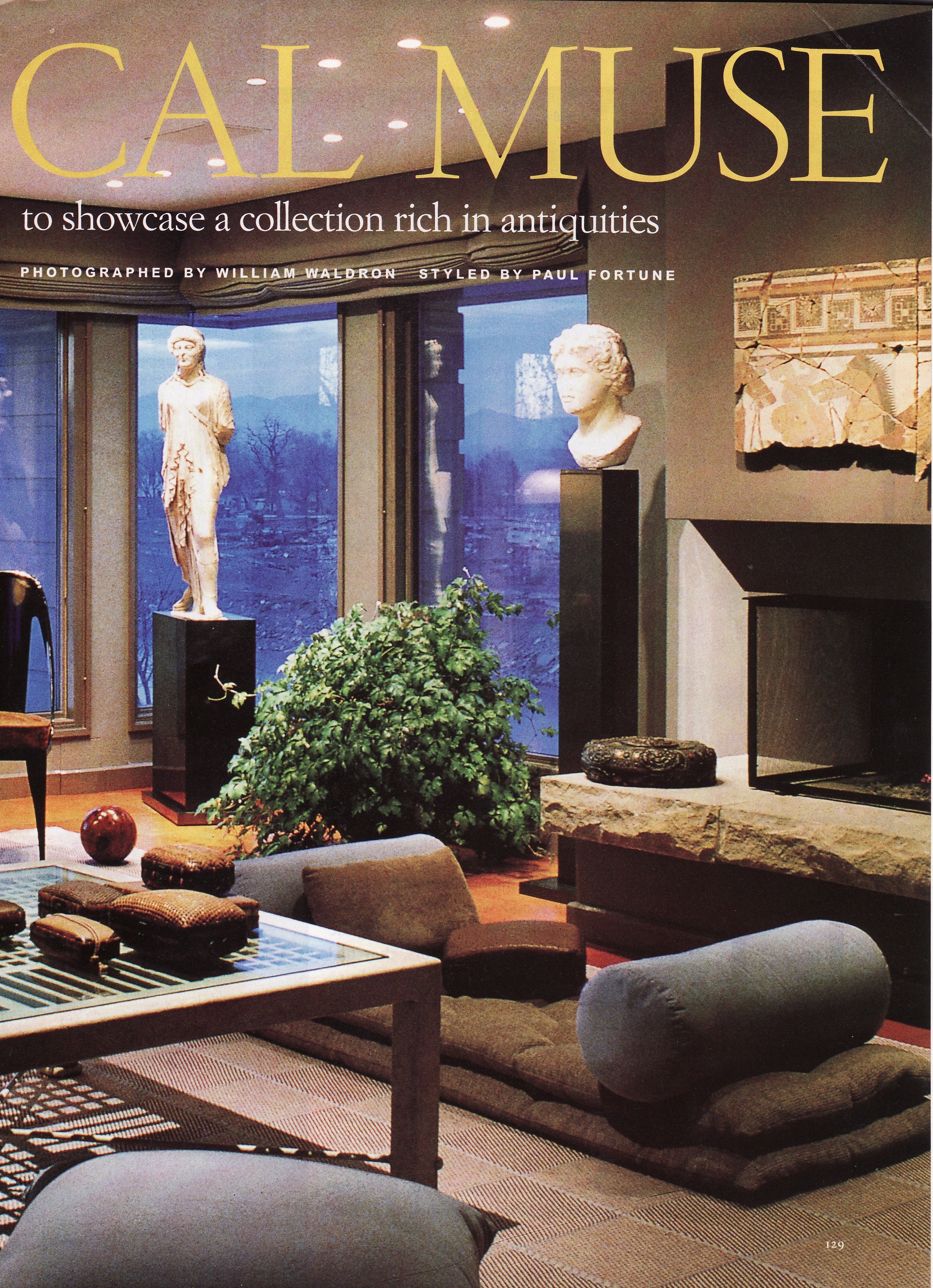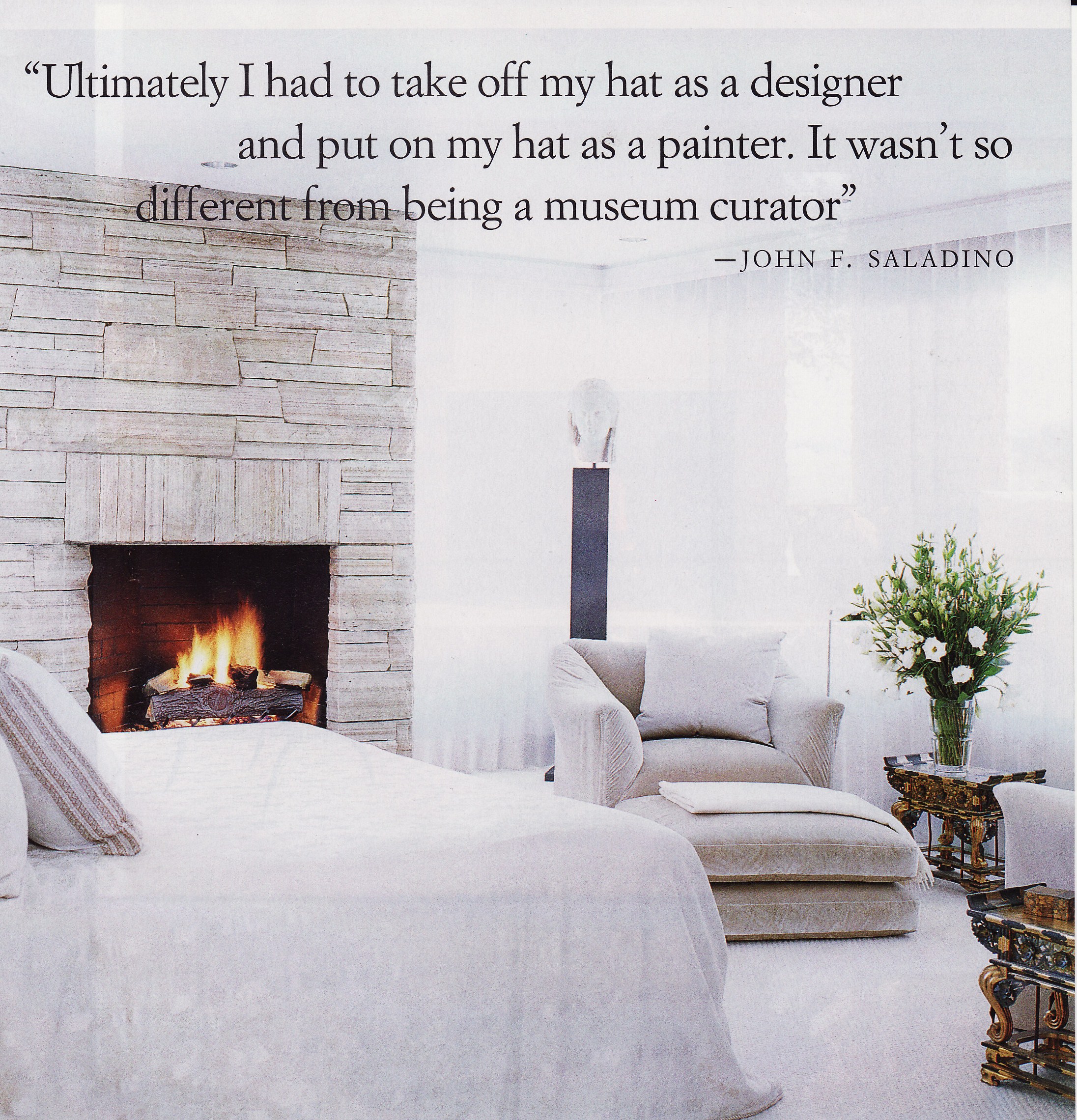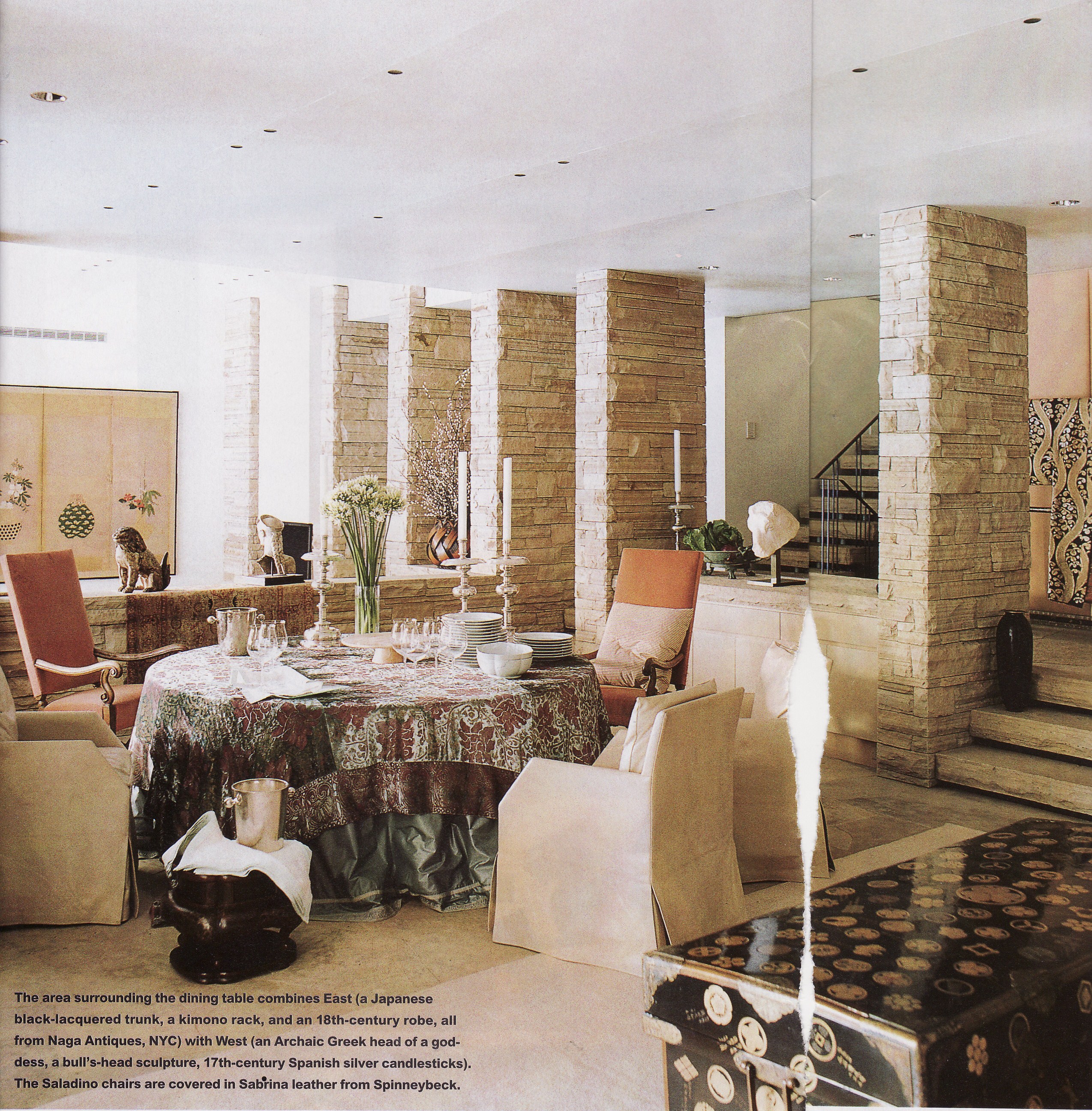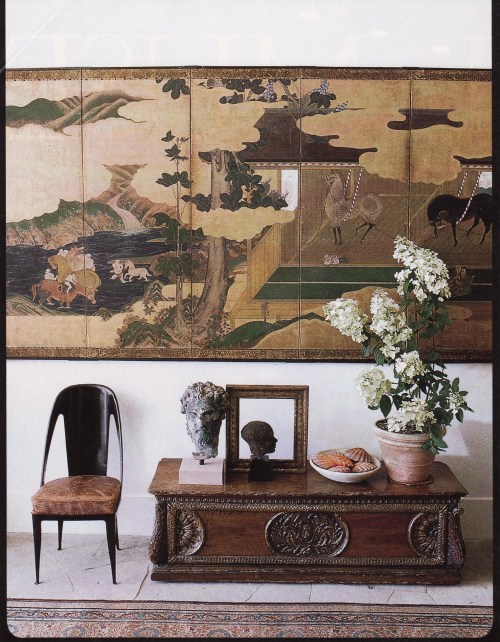John Saladino
Often referred to as the “designer’s designer”, John Saladino has been at the absolute top of the design field for over 30 years. He works not only as an interior designer but also as an architectural designer, landscape designer, and in this case, as a curator as well. This June 1998 House & Garden spread features the Colorado home of a couple with an extraordinary collection of antiques and art. Making sense of such a disparate group of items is something that only a master could achieve. Interspersed among the Greek, Roman and Egyptian antiquities are numerous Japanese antiques of all types. I would be hard pressed to imagine more than one antique screen (byobu) in a house; somehow he manages to integrate three. In testament to Saladino’s triumph, it feels neither like the hodgepodge of an antique store nor has the sterility of a museum, but rather a peaceful and lovely home.

The coffee table boasts a grouping of bamboo letter boxes and what looks to be a bronze hibachi on the raised fireplace hearth.
The dining room/living room has a treasure trove of objects – the first of at least 3 byobu (screens) in the house on the back left hand wall, a kimono rack with an extraordinary brocade (or perhaps embroidered) robe up on the stair landing, a bowl-shaped bamboo ikebana basket between the columns and a rare lacquered trunk in the foreground.
This 17th century antique screen is coupled with an art deco Ruhlman chair, an Italian chest and a Roman bronze head.
Another view of the living room reveals that amazing lacquered trunk, a pair of bronze altar candlesticks and the third screen. The maki-e work on the trunk is covered in symmetrical circular designs called mon or kamon, circular crests used to identify a family, much like a European heraldic coat of arms. For instance, the kamon of the imperial family is the circular chrysanthemum and it’s use by others was prohibited. Gradually mon became used by commoners and then later on as logos for merchants and products. The use of mon as a decorative device can be seen in lacquerware, porcelain and textiles and is one of my favorites. Looking for your own mon? This site has a full dictionary of them. 
The serene bedroom has a pair of highly ornamental 18th altar tables being used as small side tables. Definitely use a coaster!
Can you date these rooms without looking back at the beginning of the post? Most likely not, as in addition to their extraordinary beauty, they are also timeless and will never look dated. For me, this agelessness is one of Saladino’s strengths. Another is that his spaces are places in which modernists, traditionalists, classicists, and the like can all agree.
Interested in seeing more? I recommend his books; Villa, which chronicles the renovation and restoration of his elegant 1920s California villa and Style, in which he reveals his design secrets.
Image credits: all from House & Garden, June 1998, Photographed by William Waldron



